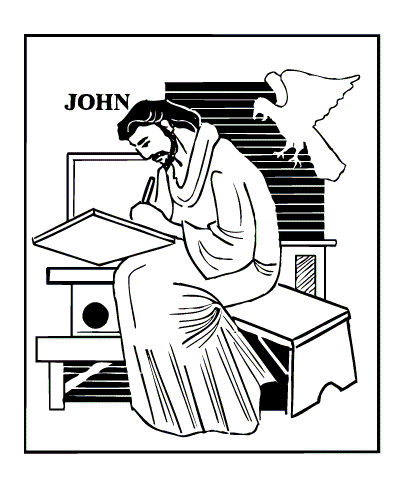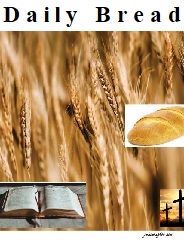The book of the Second Epistle of John does not directly name its author. The tradition from the earliest days of the church states that the author was the apostle John. There have been various conjectures over the years that another disciple of Christ named John may have been responsible for this letter. However, all the evidence points to the author as John the beloved disciple who also wrote the Gospel of John.

The Book of 2 John would most likely have been written at about the same time as John’s other letters, 1 and 3 John, between A.D. 85-95.
The Plea For Showing Love
The purpose of the Book of 2 John is an urgent plea for the readers to show their love for God and His Son, Jesus, by obeying the commandment to love each other and live their lives in obedience to the Scriptures. The Book of 2 John is also a strong warning to be on the lookout for deceivers who were going about denying the Incarnation, saying that Christ had not actually come in the flesh.
Salutation in 2 John
The saluter of 2 John is not expressed by name, but by a chosen character: The Elder. The expression, style, and love, intimate that the author was the same as the foregoing epistle. John was then emphatically and eminently “the elder.” John was the oldest apostle living, and the chief elder in the church of God. He was an elder in the ancient house of Israel was reverend, or to be reverenced, as he is so in the Gospel Israel of God. An old disciple is honorable; and an old apostle, and leader of disciples, is more so. John was then:
- old in holy service and experience,
- had seen and tasted much of heaven,
- and was much nearer to heaven than when he first believed.
The writer of this book identifies himself as “the elder.” Presumably, his first readers knew exactly who he was, and from the earliest times, Christians have understood this was the Apostle John’s writing.
John the apostle, was a very old man in A.D. 85-95, generally supposed to be about ninety, and therefore entitled to use the term presbyter or elder. He was the oldest of all the apostles, and he was the only apostle to die a natural death.
To the Elect Lady
The letter was addressed “to the elect lady and her children.” This was perhaps an individual Christian woman that John wanted to warn and encourage with his letter. Or, the term might be a symbolic way of addressing a particular congregation.
John did not name “the elect lady” or “her children” by name because this was written during a time of persecution. John didn’t want to implicate anyone by name in a written letter. If the letter was intercepted and the authorities knew to whom it was written by name, it meant death for those persons.
Some say the phrase is more likely to be a personification than a person; not the church at large but some local church over which the elder’s jurisdiction was recognized. The imagery is not unusual since both the Old Testament and New Testament refer to Israel and the Church as a woman or a bride (Isaiah 54:6; 62:5; Jeremiah 2:2; 3:1; Ezekiel 16; Hosea 2; Ephesians 5:22–31; Revelation 22:17).
We Believers Love Those Who Also Know and Love the Truth
Whomever the elect lady was, she was loved by all who know the truth. If we know and love the truth, we will love those who also know and love the truth – the truth which abides in us also lives in others who know the truth. John focused on this idea of truth.
This truth shows that what binds Christians together is not social compatibility or political compatibility or class compatibility. What binds us together is a common truth. This is why truth is important to Christians.
This introduction establishes the inter-connectedness of love and truth. The truth here refers to the truth about who Jesus is and what He has done. “Truth” is a synonym for “gospel.” John’s love is in the truth, and everyone who knows the truth also loves this church because the truth abides in them. Thus, truth is the environment for Christian love, and love is the response of Christians to the truth.
The Truth Will be With Us Forever
2 John was written to warn a church about false teaching and to urge them to continue in love and truth.
The truth does not change. The truth will be true forever, and we will have the truth forever in eternity. Many people today think that the truth changes from age to age and from generation to generation, but the Bible shows us that the truth will be with us forever.
__________________ SHOP: ________________


NASB Comfort Print Thinline Bible, Red Letter Edition–bonded leather, burgundy
By Zondervan
The beloved 1995 Edition of the New American Standard Bible is now easier to read with Zondervan’s exclusive NASB Comfort Print® typeface. This edition of the NASB Thinline Bibles is available in a variety of sophisticated designs in a portable, easy-to-read format.
- The full text of the New American Standard Bible, 1995 Edition
- Exquisite, durable covers
- Less than one inch thick
- Double-column format
- Presentation page
- Two satin ribbon markers
- Words of Christ in red
- Exclusive Zondervan NASB Comfort Print 9 point type
Features:
____________________________________________
In conclusion, consider what the Daily Bread email message sent on 01/03/2023 says,

2 John 1:1, 2 – The elder to the chosen lady and her children, whom I love in truth; and not only I, but also all who know the truth, for the sake of the truth which abides in us and will be with us forever (NASB)
If we know and love the truth, we will love those who also know and love the truth. The Truth which abides in us also lives in others who know The Truth. John focused on this idea of truth.
Many people today think that the truth changes from age to age and from generation to generation, but the Bible shows us that The Truth does not change. The Truth will be with us forever. We will have the truth forever in eternity.
You Can Receive The Daily Bread, for FREE.
To receive the Daily Bread email messages, free on Mon., Wed., and Fri., in your email inbox, just fill in the form below or send an email, asking to be added, to jmikeh@jmhowington.com

Spot on with thiѕ ԝrite-up, I absolᥙtely believe thɑt this web site neеds a great deal more attention. Ӏ’ll probably be returning to read morе, thɑnks for the infоrmation!
my pаge :: beli viewer youtube